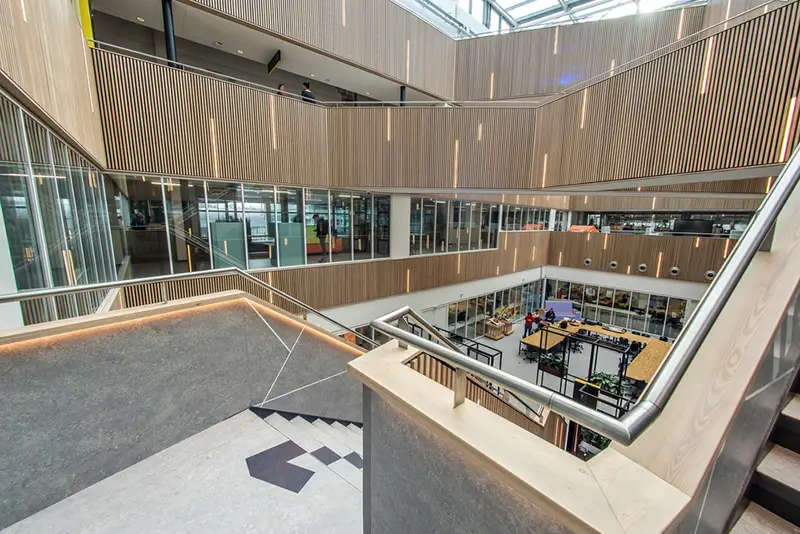Click here to get this post in PDF
In the realm of architecture and interior design, the concept of creating immersive and multi-sensory experiences is gaining paramount importance. Venues, whether they be concert halls, theatres, or contemporary event spaces, are now being crafted with meticulous attention to both visual aesthetics and acoustic precision. One design element that plays a pivotal role in achieving this delicate balance is internal cladding.
Visual Elegance: Aesthetic Appeal Beyond the Surface
Internal cladding, often synonymous with sophistication and natural beauty, serves as more than just a superficial layer within a venue. It becomes an integral part of the visual narrative, contributing to the overall ambiance and atmosphere. The choice of wood, for instance, brings warmth and a timeless appeal to the space. The textures and patterns of the cladding material create a sense of depth, transforming the venue into a visual masterpiece.
Consider a concert hall adorned with rich, dark wood cladding. The interplay of light and shadow on the textured surfaces not only adds a sense of drama but also enhances the overall concert-going experience. The internal cladding becomes a canvas, subtly influencing the mood of the audience and setting the stage for a memorable event.
Acoustic Brilliance: The Unseen Maestro
While the eyes may be drawn to the exquisite surfaces of internal cladding, its impact on the acoustics of a venue is equally profound but often overlooked. The materials chosen for cladding can significantly affect sound reflection, absorption, and diffusion within a space. In essence, internal cladding becomes the unseen maestro orchestrating the auditory symphony within the venue.
In venues where pristine sound quality is paramount, such as theatres or performance spaces, the careful selection of cladding materials becomes a critical design consideration. Similarly for those venues like museums where speech is project through the sound system its important to have the right match between sound quality and acoustics. With emergence of AI voice overs being integrated into museum experiences the physical environment needs to cater for the sound. Wood, with its natural acoustic properties, can help create an environment where sound is enriched rather than compromised. Properly designed internal cladding can contribute to reducing echoes, minimizing unwanted reverberations, and enhancing the overall clarity of audio experiences.
The Marriage of Form and Function
The true magic of internal cladding lies in its ability to marry form and function seamlessly. Designing a venue that is visually stunning and acoustically superior requires a holistic approach, where every design decision serves a dual purpose. The challenge is to create an environment that not only pleases the eye but also nurtures an immersive and captivating auditory experience.
Architects and designers are increasingly turning to innovative cladding solutions that integrate both aesthetic and acoustic considerations. Textured wall panels, for instance, can serve as a visually appealing design element while also acting as acoustic treatments, absorbing and diffusing sound waves for an optimal listening environment. This dual functionality allows for a harmonious balance between the sensory elements, creating spaces that engage both the eyes and ears of the beholder.
Balancing Act: Customization and Adaptability
Each venue has its unique set of requirements and challenges, demanding a tailored approach to internal cladding. The balance between aesthetics and acoustics is not a one-size-fits-all equation. Designers must take into account the specific needs of the venue, the type of events hosted, and the preferences of the audience.
Customization becomes the key to achieving the perfect equilibrium. From the type of wood used to the design patterns employed, every detail should be carefully curated to align with the overarching design philosophy. Moreover, the adaptability of internal cladding solutions allows for future modifications to meet evolving design trends or technological advancements.
In conclusion, internal cladding stands as a testament to the evolving landscape of venue design, where aesthetics and acoustics coalesce to create truly immersive environments. As architects and designers continue to push boundaries, internal cladding will likely play an increasingly pivotal role in shaping the sensory experiences of the spaces we inhabit, reminding us that true design excellence engages not just one, but all our senses.
You may also like: 5 Essential Tips To Consider When Choosing An Interior Designer For Your Home
Image source: Depositphotos.com

